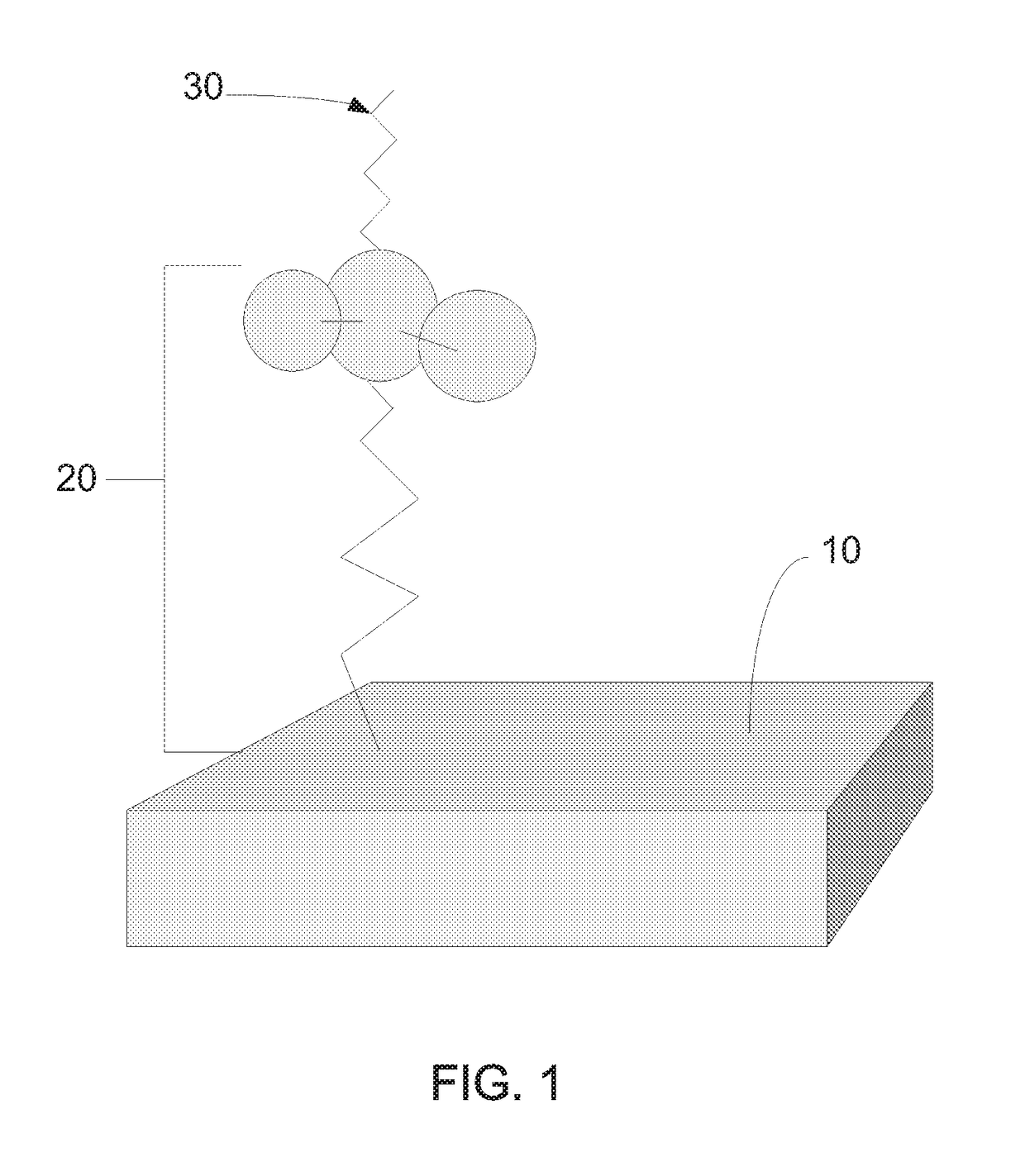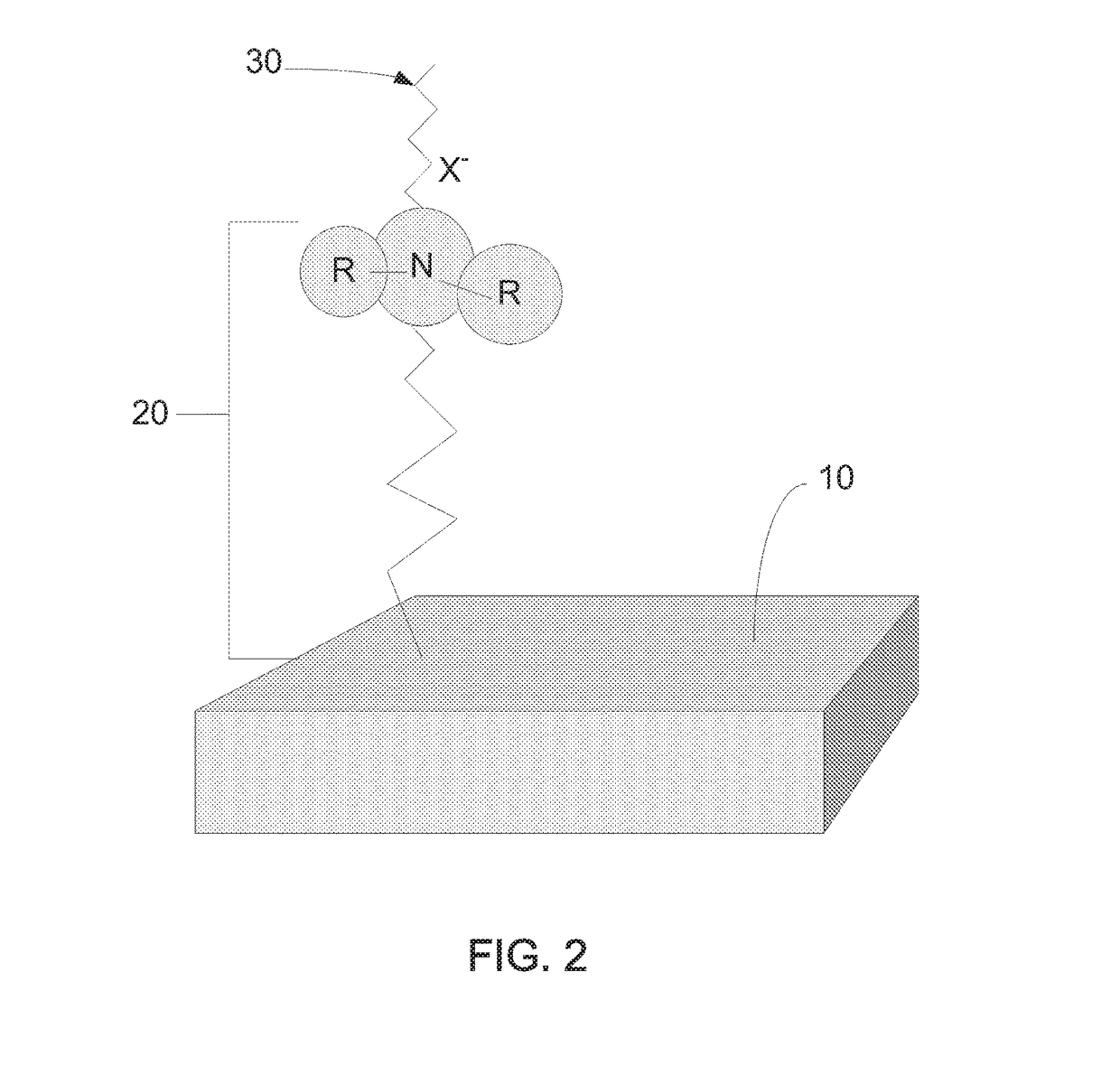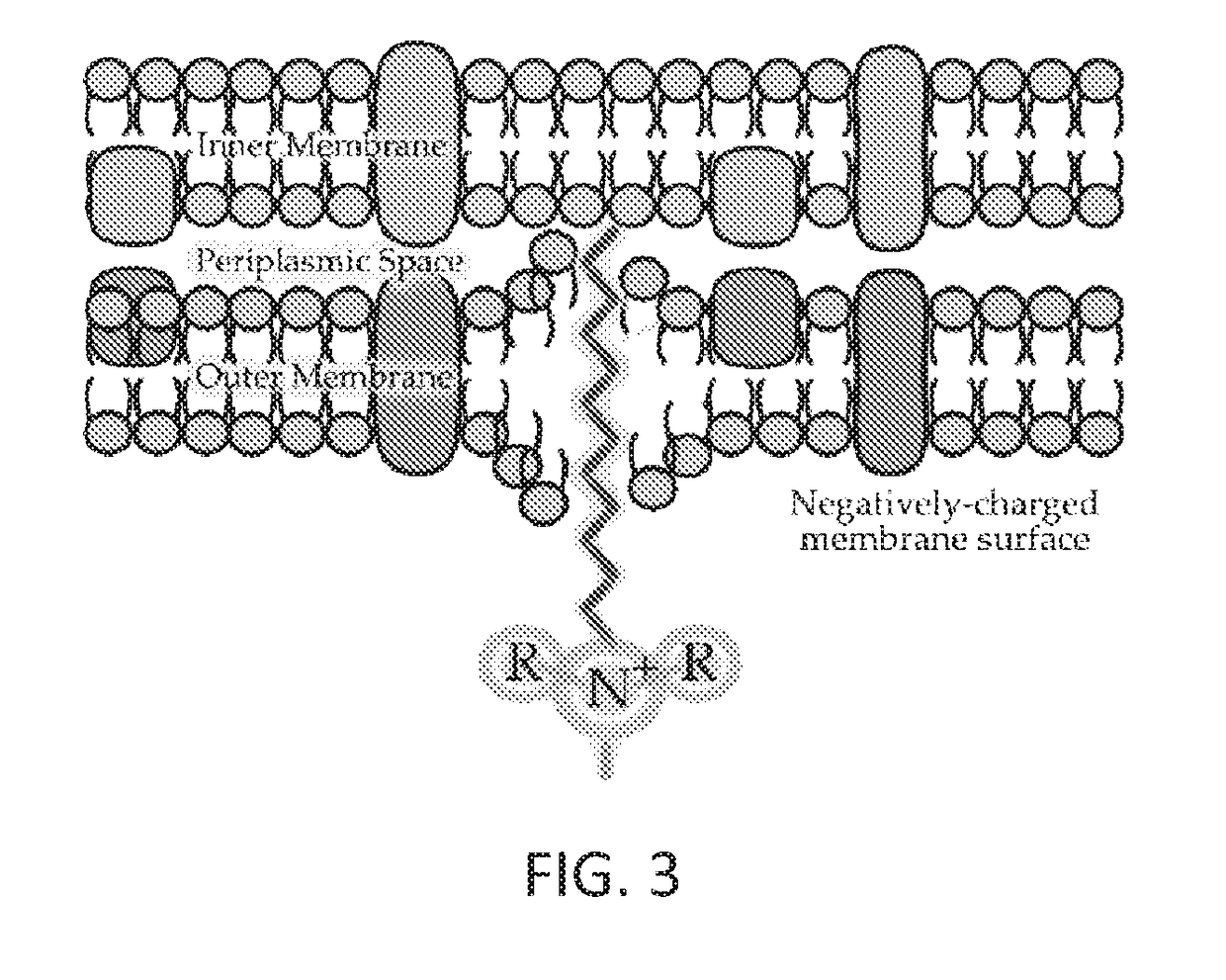Anti-infective functionalized surfaces and methods of making same
a functionalized surface and anti-infective technology, applied in the field of substrates with anti-infective surfaces, can solve problems such as limited materials, and achieve the effects of reducing the incidence of deep infection, preventing pin-site infections, and reducing the potential for infection
- Summary
- Abstract
- Description
- Claims
- Application Information
AI Technical Summary
Benefits of technology
Problems solved by technology
Method used
Image
Examples
example 1
Metallization of Activated Polymers
[0068]Activated polymers of polyimides, aramides and Gore-Tex composites were produced as follows:
[0069]Formation of a zirconia thin film on polymer substrate:
[0070]All reagents were obtained from Aldrich and were used as received unless otherwise noted. PET, PEEK, and nylon 6 / 6 were obtained from Goodfellow, Inc. Acetonitrile was dried over CaH2; and tetrahydrofuran (THF) was dried over KOH overnight. Both were distilled prior to use. Surface modified samples were analyzed using a Midac M25 10C interferometer equipped with a surface optics SOC4000 SH specular reflectance head attachment. Fluorimetry experiments utilized a Photon Technology International Fluorescence Spectrometer.
[0071]Polymer substrates (nylon 6 / 6, PET or PEEK) were placed in a deposition chamber equipped with two stopcocks for exposure either to vacuum or to the vapor of zirconium tetra(tert-butoxide). The chamber was evacuated at 10−3 ton for 1 hour and polymer slides were expos...
example 2
[0075]A sample of Kapton treated first with the zirconium-based adhesion layer, then copper sulfate, and then diethylamineborane as described in Example 1 was placed in a copper plating bath at 60° C. under nitrogen. The bath consisted of 0.1 M trisodium citrate dihydrate, 1.2 M ethylenediamine, 0.1 M copper sulfate hydrate, 0.03 M ferrous sulfate hydrate, 6.4×10−4 M 2,2-dipyridine, 1.2 M NaCl, and sufficient sulfuric acid to give pH=6. A small amount of PEG 200 (2.5 mg) was added to a 50 ml bath.
example 3
Polymer Metallization
[0076]The zirconium oxide / alkoxide adhesion layer nucleates the growth of copper metal on PET and Kapton® polyimide film surfaces; this approach provides a basis for patterned metallization of polymer-based device substrates.
[0077]The adhesion layer can serve as a matrix to enable polymer surface metallization. In a typical procedure Kapton® polyimide film was coated with a 5 nm thick layer of adhesion layer and was then soaked in a 200 mM aqueous solution of CuSO4. Samples were rinsed in deionized water, and EDX analysis confirmed the presence of Cu and S. After subsequent (slow) reduction by dimethylamine borane (1M, aqueous, 6 hrs, 50° C.), metallic copper was formed. Metallization was also done using an adhesion layer patterned on Kapton® polyimide film. The metallized surface was subjected to sonication in water and physical rubbing with a Q-tip, which was followed by EDX. In this way it was shown that patterns of both Zr and Cu on the Kapton® polyimide fil...
PUM
| Property | Measurement | Unit |
|---|---|---|
| temperature | aaaaa | aaaaa |
| glass transition temperature | aaaaa | aaaaa |
| temperature | aaaaa | aaaaa |
Abstract
Description
Claims
Application Information
 Login to View More
Login to View More - R&D
- Intellectual Property
- Life Sciences
- Materials
- Tech Scout
- Unparalleled Data Quality
- Higher Quality Content
- 60% Fewer Hallucinations
Browse by: Latest US Patents, China's latest patents, Technical Efficacy Thesaurus, Application Domain, Technology Topic, Popular Technical Reports.
© 2025 PatSnap. All rights reserved.Legal|Privacy policy|Modern Slavery Act Transparency Statement|Sitemap|About US| Contact US: help@patsnap.com



